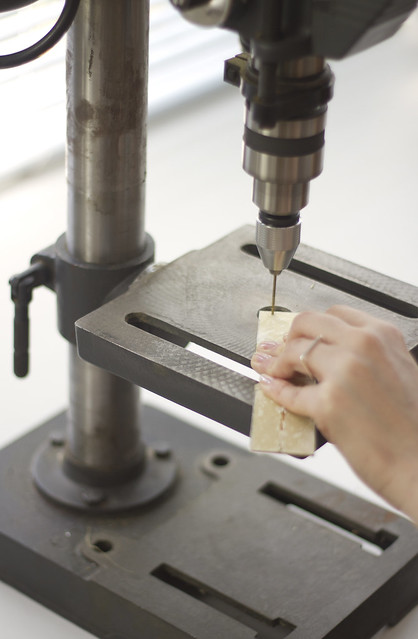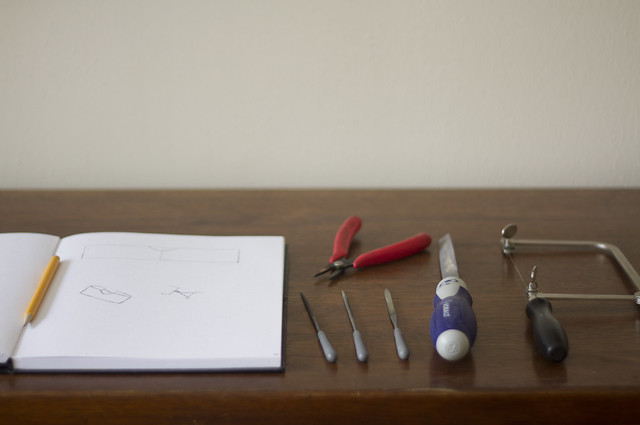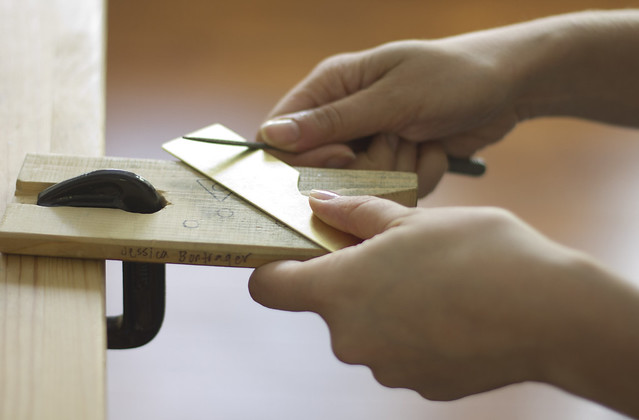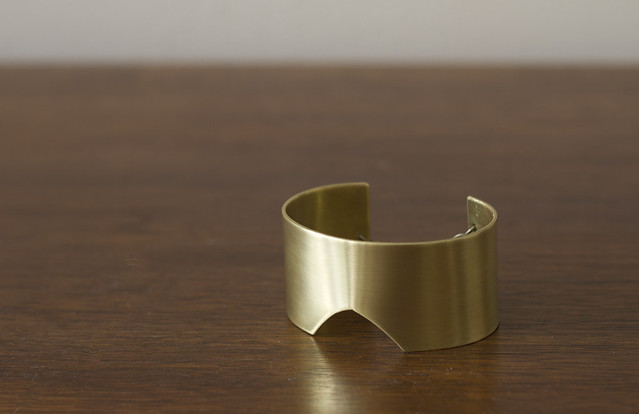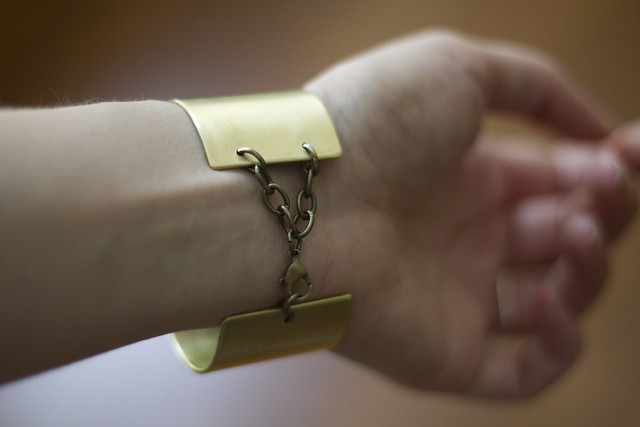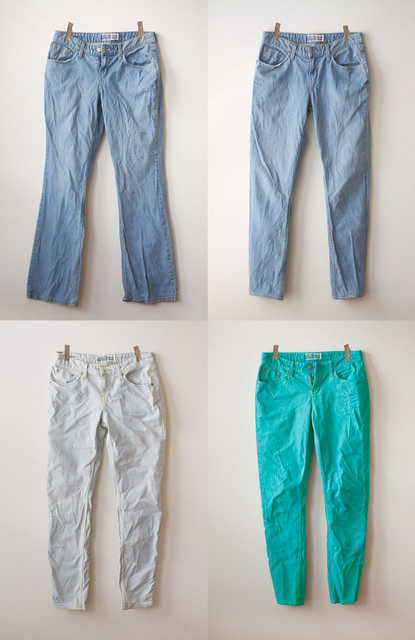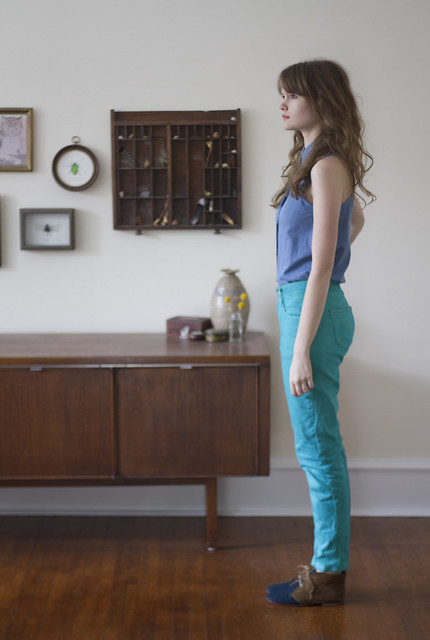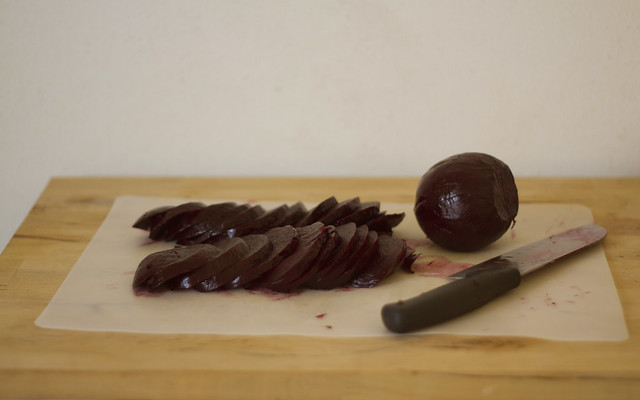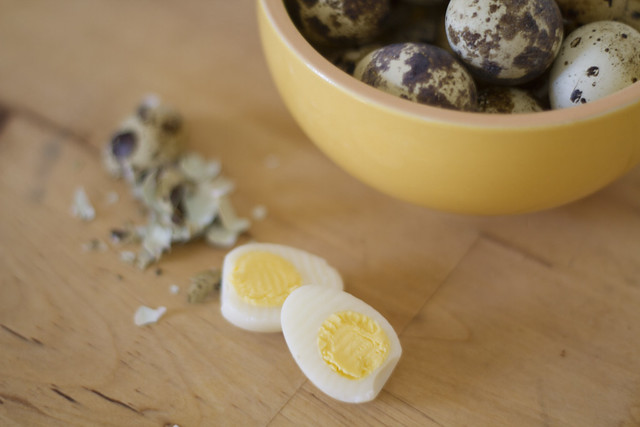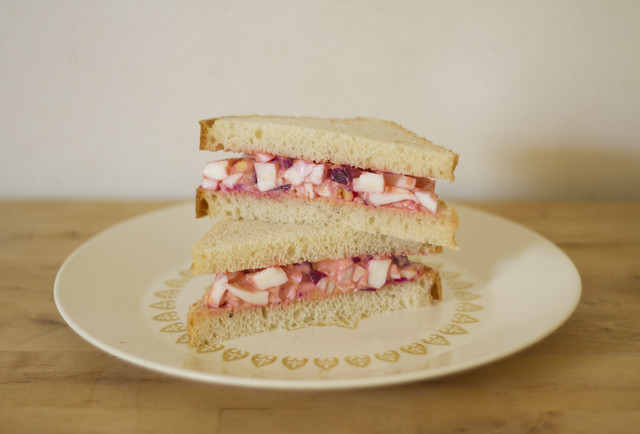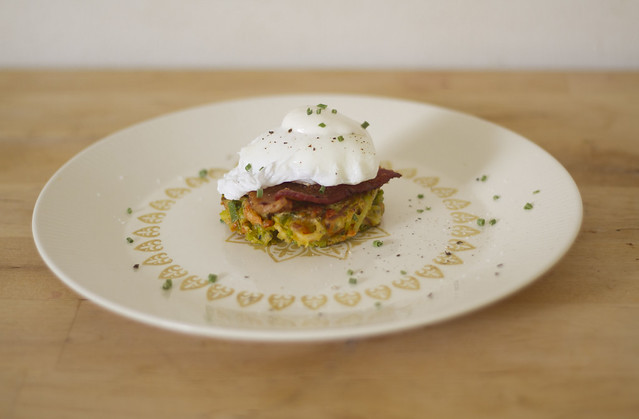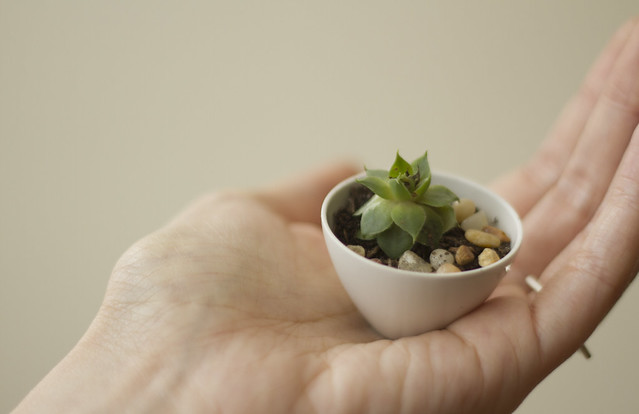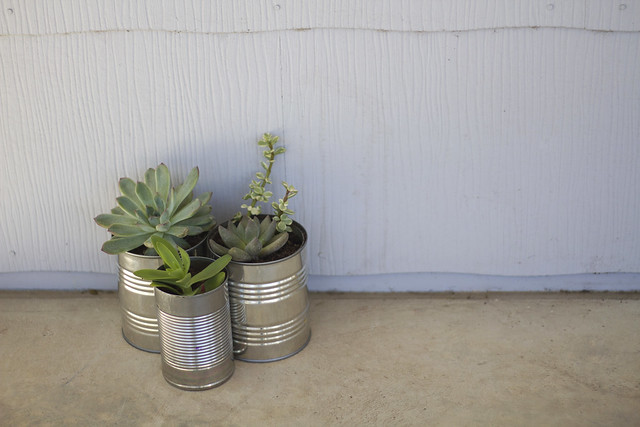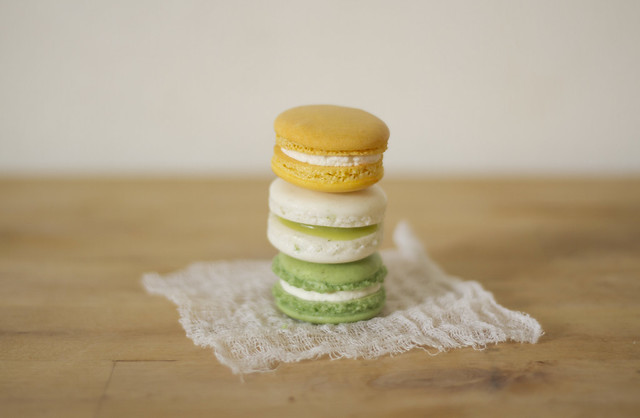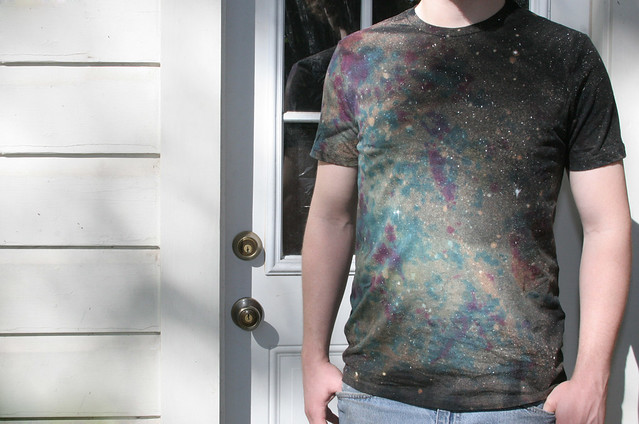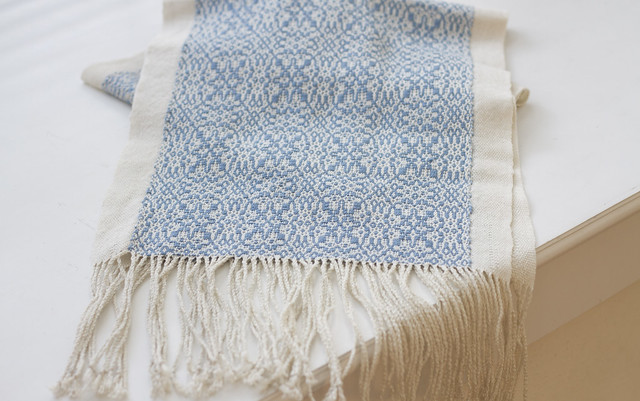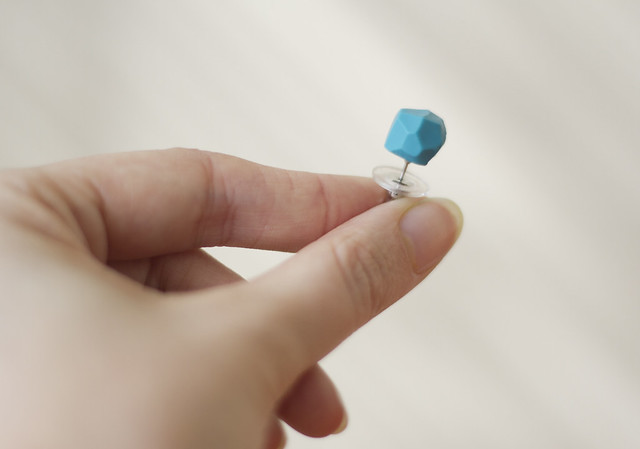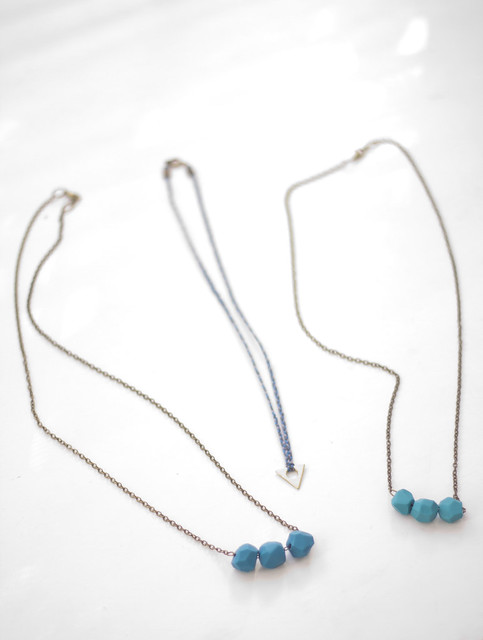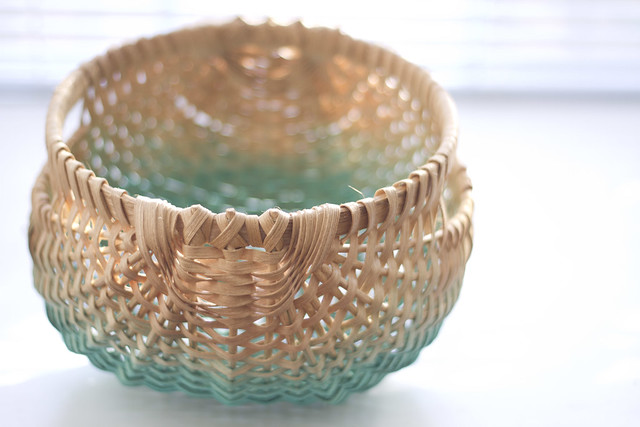Although this is a blog about things I’ve made, most of what I spend time making isn’t featured here at all. I do post about the occasional baked good, but I don’t really document my everyday cooking (and I have to do quite a bit of it to keep up with all this). One reason is that there are already a ton of food blogs out there doing a fantastic job, and while I do my share of off-the-cuff cooking, I’d rather not stop and figure out how much rosemary I just threw in the pot so I can blog about it– that would take away from an activity I find really relaxing and enjoyable. Most of my cooking takes place in the evening, which usually means conditions are less than ideal for food photography. And most importantly, the evening is when I spend time with Nick, and I can’t really do that if I’m stuck behind a camera or jotting down recipe notes.
That being said, I have a recipe for you. I made it during the day, when Nick was at work, and when I’d have more than enough light to snap a few pictures. And even though I usually season and taste until I get it just right, this time I took notes on how much of what was thrown into the pot. I give you vegan chili:
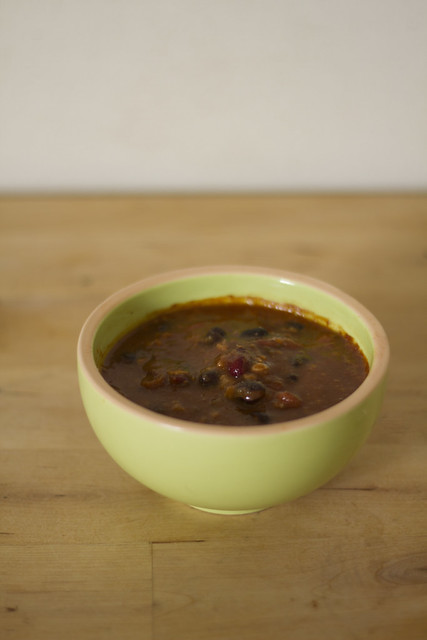 Folks, I like bacon just as much as the next guy. Even though I’m an avowed meat eater, I really don’t cook with meat more than a few times a month. Although it’s nice when a meatless dish turns out to be healthier than its meat-filled counterpart, it’s not always true that eating vegetarian is better for you (the ultra-cheesy greens and potato gratin I made last week is a testament to that). One of the reasons I make a lot of vegetarian dishes is that I like a little flexibility– oftentimes, vegetarian ingredients have a longer shelf life than a piece of meat, so I can put off making a dish without worrying about anything expiring in the mean time. However, I usually don’t cook with meat because it’s almost always more expensive, especially if you seek out free-range, hormone-free meats. In the case of this chili, a few cans of beans cost much less than 4 or 5 pounds of beef.
Folks, I like bacon just as much as the next guy. Even though I’m an avowed meat eater, I really don’t cook with meat more than a few times a month. Although it’s nice when a meatless dish turns out to be healthier than its meat-filled counterpart, it’s not always true that eating vegetarian is better for you (the ultra-cheesy greens and potato gratin I made last week is a testament to that). One of the reasons I make a lot of vegetarian dishes is that I like a little flexibility– oftentimes, vegetarian ingredients have a longer shelf life than a piece of meat, so I can put off making a dish without worrying about anything expiring in the mean time. However, I usually don’t cook with meat because it’s almost always more expensive, especially if you seek out free-range, hormone-free meats. In the case of this chili, a few cans of beans cost much less than 4 or 5 pounds of beef.
This recipe’s the meatless version of my mom’s famous chili– a dish she makes a giant pot of every Christmas Eve. I adapted her recipe so I’d have something similar to eat, but different enough that her Christmas version is still a special treat. Although there’s no meat, textured vegetable protein lends a toothsome texture. If you’re unfamiliar with tvp, you’re probably assuming it’s some kind of hippie food, and you’re kind of right– but it transforms a pretty basic vegetarian chili into something much heartier. I’ve only tried the kind I linked to, but I’ve also seen tvp chunks and textured soy protein, both of which would work just as well. If you can’t find any of these, you can use a full 1 1/2 cups of bulgur in their place.
A few other secret ingredients help boost the meatiness of this meatless dish: MSG gives this chili a big dose of umami flavor that it would otherwise lack. I found a bag big enough to last forever in the Asian foods section of my local grocery store. You can definitely omit this ingredient if you can’t get a hold of it, but it makes a big difference. I also chuck a few tablespoons of butter (or earth balance, if you’re vegan) into the pot to add some richness. Molasses may seem like an odd addition to chili, but the sweetness helps counter the acidity of the tomato juice, and the dark, malty flavor adds a complexity that rounds out the chili quite nicely.
 Vegan Chili
Vegan Chili
4 poblano peppers (or 2 poblanos and 2 green bell peppers)
1 large onion
2 jalapenos
4 cloves of garlic
2 46oz cans of tomato juice
1 cup of textured vegetable protein
1/2 cup bulgur
2 30oz cans of black beans, drained and rinsed
2 30oz cans of kidney beans, drained and rinsed
1 15oz can of kidney beans, drained and rinsed
4 1/2 tbsp cumin
1 tbsp chili powder
1/2 tbsp MSG
5 tbsp molasses
4 tbsp butter (or vegan alternative)
salt to taste
The first step is to remove the tough skin of the poblano peppers. If you’re lucky enough to live in a house with a gas stove, you can easily turn on a burner and char away, but I do not, and my broiler is weird and unreliable, so I just scorch them with a blow torch.
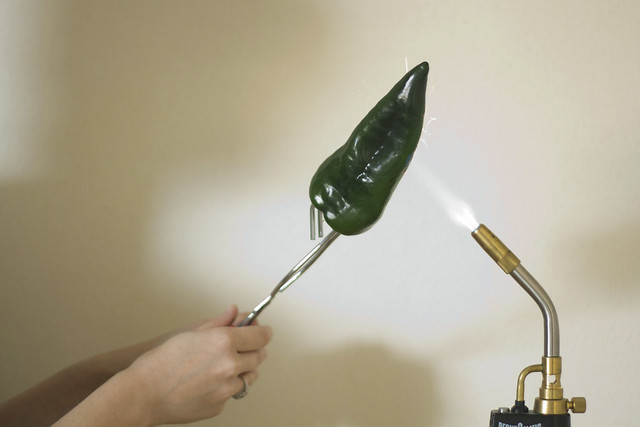 Once the skin is charred and blistered, immediately slip each pepper into a zip-lock bag and leave them to cool for 15 minutes or so. Afterwards, you should be able to rub the skin off with a clean paper towel.
Once the skin is charred and blistered, immediately slip each pepper into a zip-lock bag and leave them to cool for 15 minutes or so. Afterwards, you should be able to rub the skin off with a clean paper towel.
I am not a big fan of chunks of peppers and onions, so I usually chop these ingredients into smithereens. If you don’t mind a chunky chili, you can make pretty quick work of chopping up the onion and peppers, but it takes me quite a while to get through it all. If I’m feeling lazy, I’ll only chop one poblano, a jalapeno, and half the onion. I put the rest of the onion and peppers into a blender with a little of the tomato juice and make a pepper puree. It takes a lot less time and adds a bit of body to the chili.
Heat a tbsp or so of oil in a large stockpot (I use a 16 qt) over medium heat. Add your chopped peppers and onion, and cook until they’re tender but not browned. Add the garlic, minced, and cook for another minute. Pour in the tomato juice (and pepper puree, if you’ve made some) and bring to a low boil.
While this is heating, prepare your tvp according to the package directions. If you want to keep it vegan, you can use vegetable stock, some of the tomato juice, or just plain old water to rehydrate it, but I often use chicken or beef stock for a little extra flavor.
When the tomato juice starts bubbling, add the beans, bulgur, spices, butter, and molasses. Keep at a low boil, stirring occasionally, until the bulgur is fully cooked. Toss in the re-hydrated tvp and salt to taste.
A batch of this chili will easily serve a dozen hungry adults, and can be stretched even further if you serve it with a side of cornbread, or my favorite, spooned over a baked sweet potato and topped with a little monterey jack cheese. Because it can be made vegan, it’s perfect for serving to a group with a variety of dietary needs. I like to freeze individual servings and reheat them for a quick and hearty lunch.
Of course, this is a pretty basic recipe and is easily adaptable. Feel free to swap the poblanos or jalapenos for whatever peppers you fancy, and don’t feel limited to black and kidney beans. If it’s your thing, add in some chopped roasted tomatoes or some corn. My recipe is what I’d consider a medium-level of spiciness, but you can make it milder by leaving out a jalapeno or hotter by adding another (or cayenne pepper, to taste).
If you make a batch, let me know what you think!
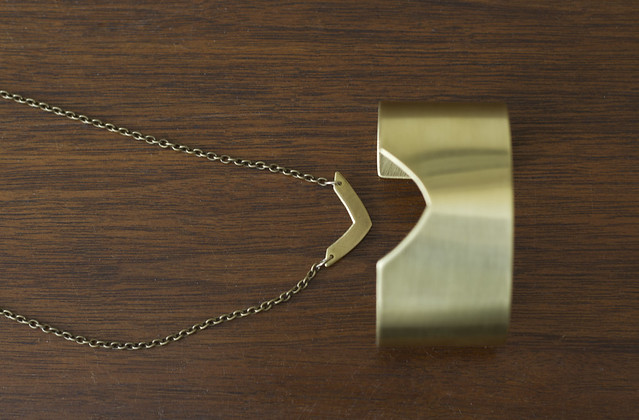 I’m so fortunate to have not one, but two amazing mothers in my life. Happy mother’s day, ladies!
I’m so fortunate to have not one, but two amazing mothers in my life. Happy mother’s day, ladies!
